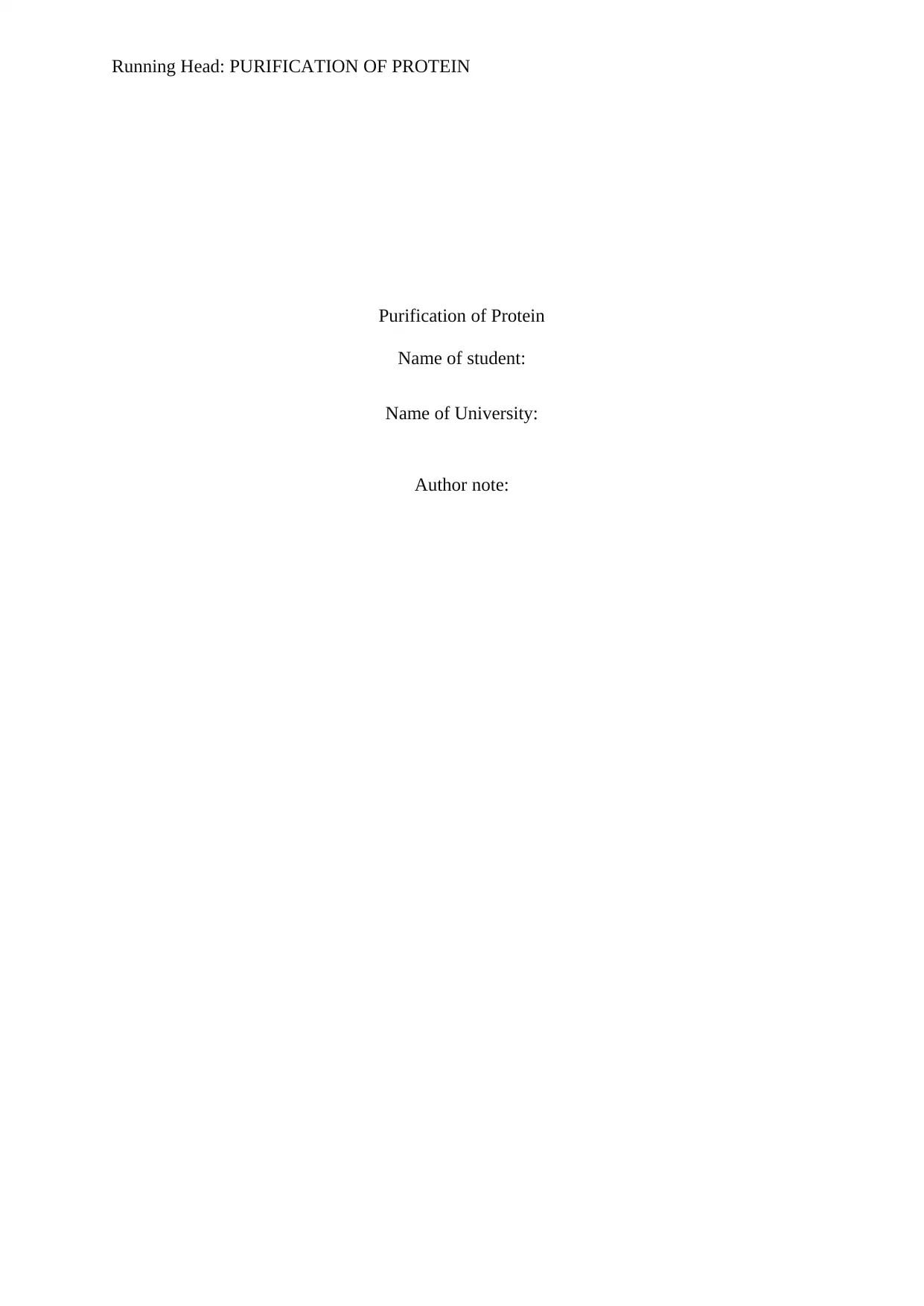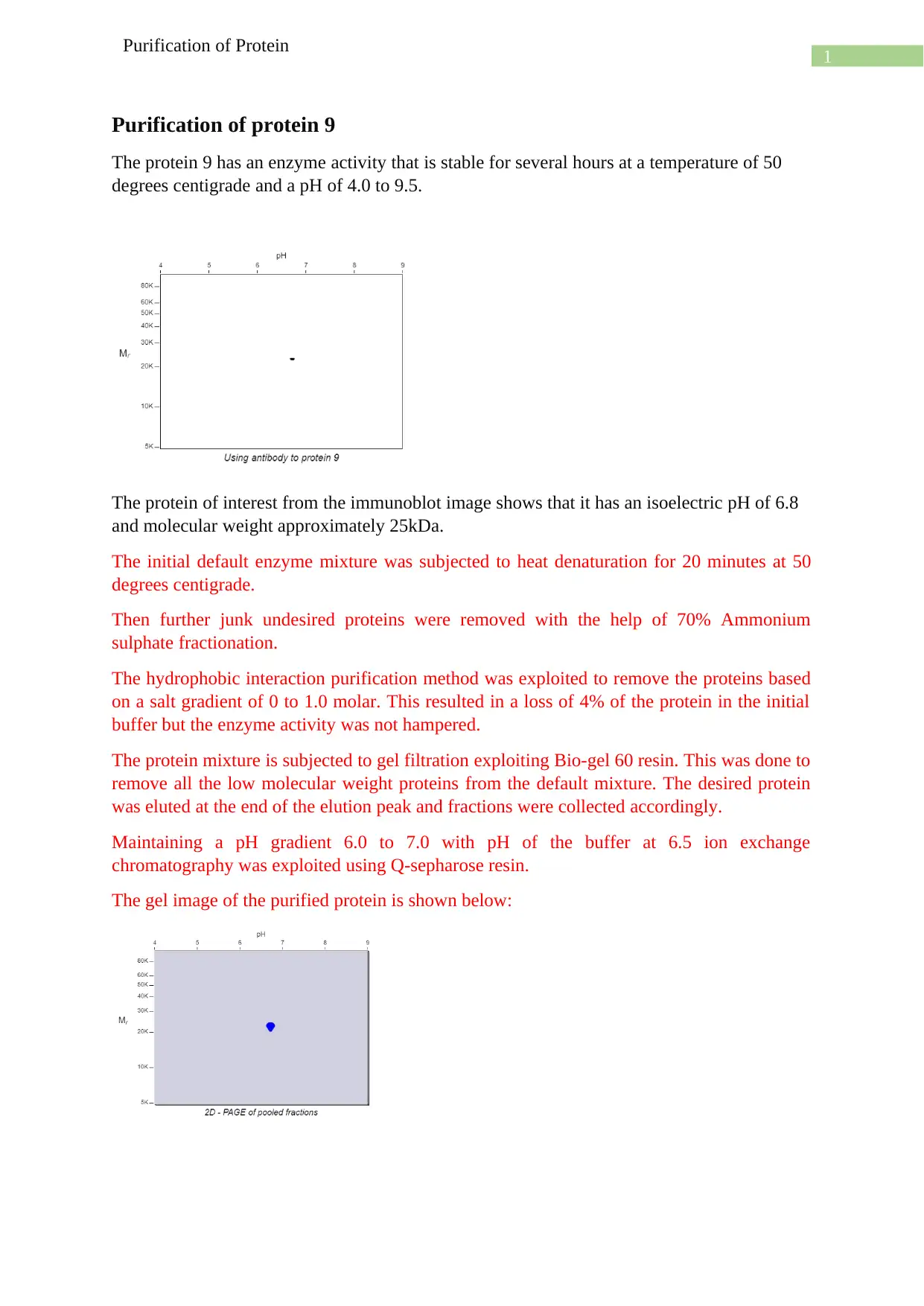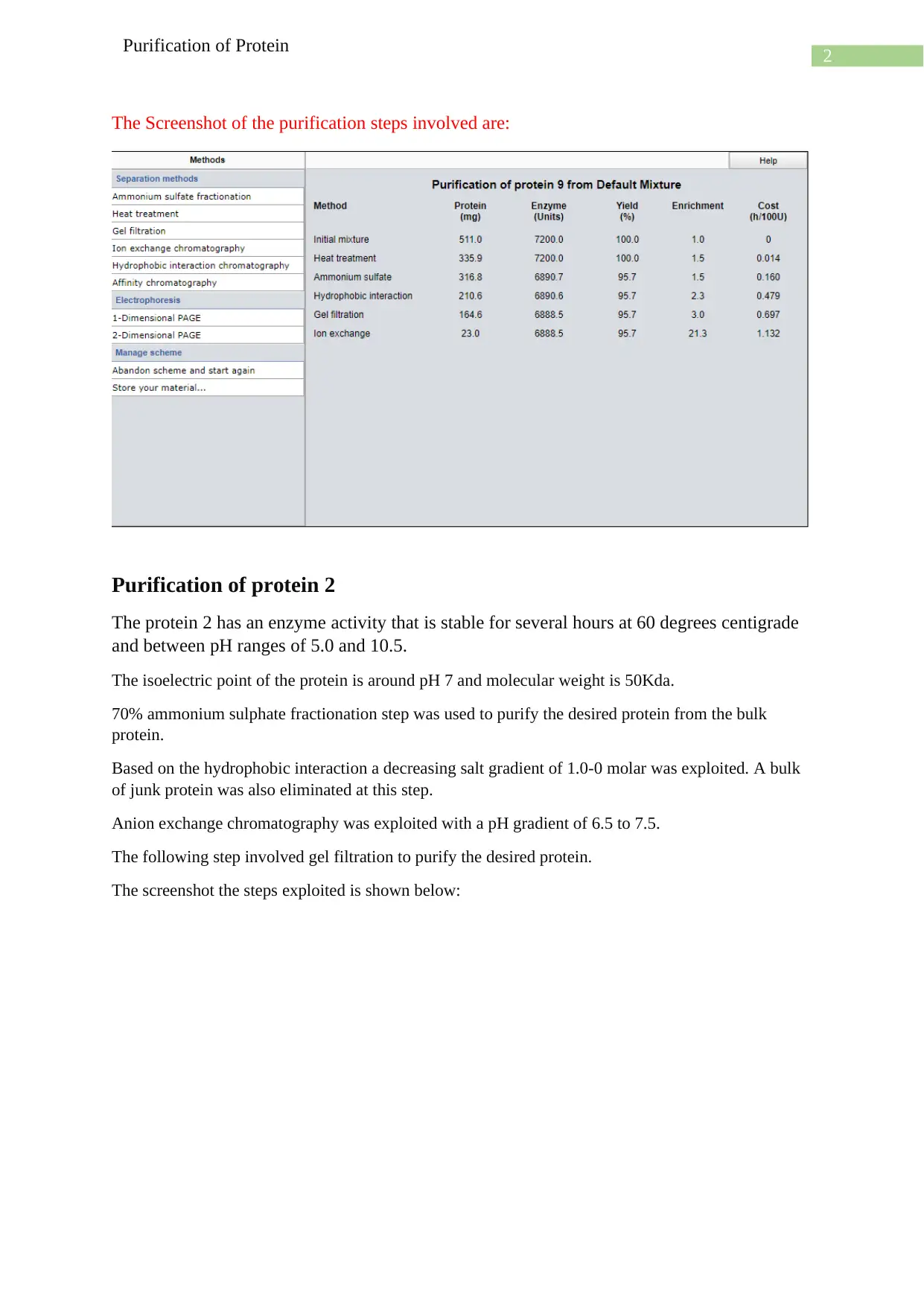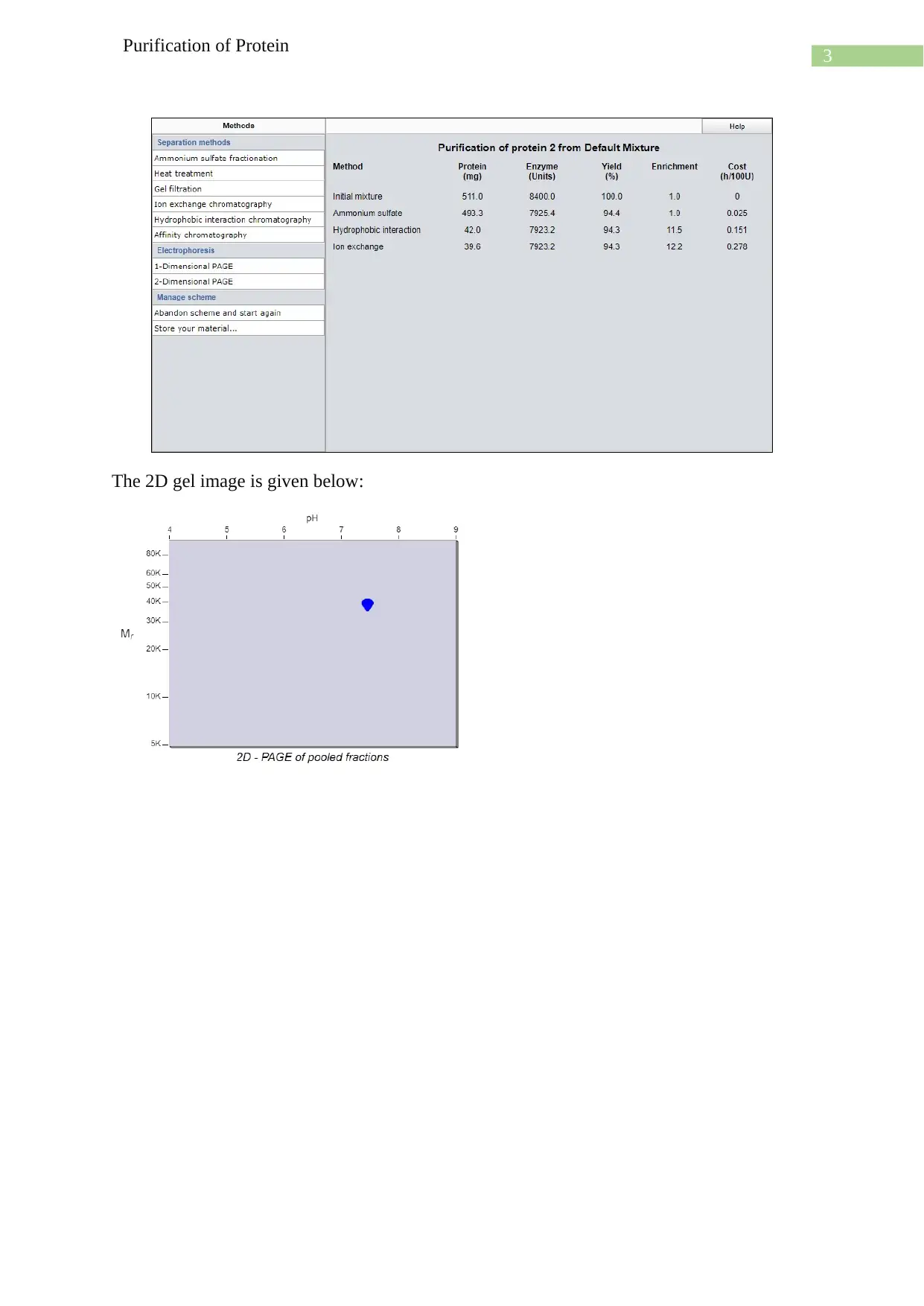Protein Purification Report: Enzyme Purification, SCIE 601, Semester 1
VerifiedAdded on 2022/10/11
|4
|387
|9
Report
AI Summary
This report details the purification of two proteins from a default mixture using a computer simulation. The student, based on their group number (2) and birthday month (9), performed protein purification using various techniques. The first protein (9) underwent heat denaturation, ammonium sulfate fractionation, hydrophobic interaction, gel filtration, and ion exchange chromatography. The second protein (2) utilized ammonium sulfate fractionation, hydrophobic interaction with a decreasing salt gradient, anion exchange chromatography, and gel filtration. The report includes purification tables, 2D PAGE gel images, detailed instructions, and a summary of the purification strategy, explaining the rationale behind each step. The report also covers key concepts like yield, enrichment, and specific activity, demonstrating an understanding of protein purification principles and the application of various separation methods to achieve protein purity.
1 out of 4





![[object Object]](/_next/static/media/star-bottom.7253800d.svg)